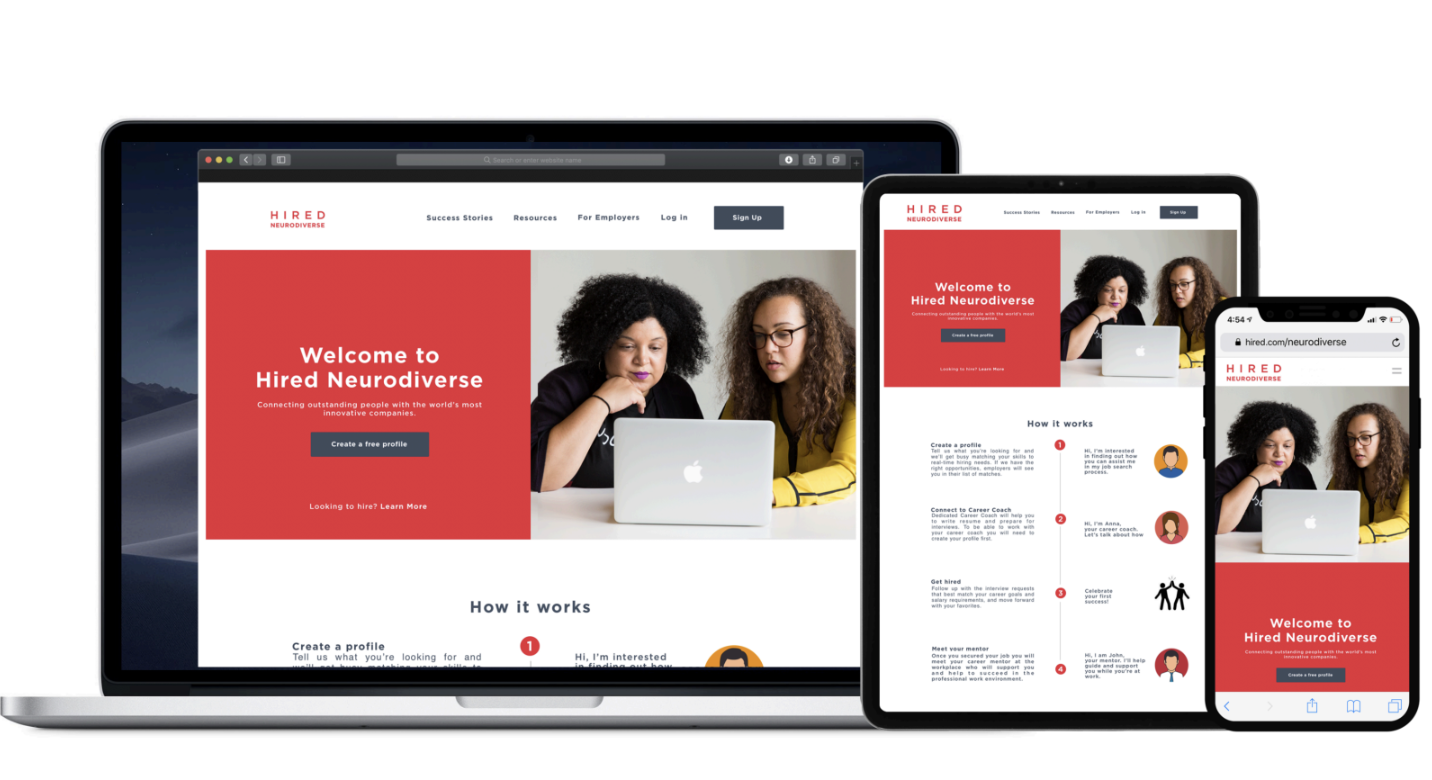client
Case study for HIRED.COM
role
UX Designer
Challenge
The objective of this case study was to partner with an established brand and create a new offering that would compliment the brands current product. We were assigned the broad topic of “social good and community”. Once we chose our area of focus (Autism) we had to identify a problem within that space and chose a company to partner with and implement our solution. Our team chose to develop a platform for Hired.com that would offer job placement and career coaching to autistic individuals interested in being employed in the tech sector. As a 4 person team, we were given 2 weeks to research, design, and present the case study.
TOOLS
Sketch / Invision / Abstract / Photoshop
Through initial discovery research, encompassing user interviews, competitive analysis and landscape analysis, our team discovered that the neurodiverse population (those living with Autism Spectrum Disorder) are unemployed at higher rates than the general population and often lack the opportunities and resources to find and retain employment. We believe there is an opportunity to partner with an industry- specific jobs board, hired.com to provide a specialized service to the neurodiverse population. Hired’s model of allowing hiring companies to find employees vs. having people search and apply for jobs, is well suited for certain segments of the target audience who often deal with increased anxiety at the idea of applying and interviewing for positions.
Hypothosis
Our starting belief was that despite legal provisions and shifts in cultural perception…
Individuals with ASD do not have access to the same level of job-preparedness training, career coaching or job-seeker resources as non-disabled Americans and employers are not doing enough to diversify their workforces.
USER INTERVIEWS
In order to validate these assumptions we interviewed 9 individuals:
1 HR/Recruitment Manager
1 Career Coach
2 ASD Program Directors
2 Caregivers of individuals with ASD
3 Individuals living with ASD
User Interview Quotes
KEY INSIGHTS
Neurodiverse people:
Want opportunities to show what they can offer
Need a support system that helps them succeed
Need a recruitment process that allows them to shine
Need a diverse and accepting workplace culture
PROBLEM STATEMENT
Through our research, the hypothesis was validated and an opportunity to develop a product that would offer career support to people with ASD was identified.
The ASD population face an uphill battle in finding and retaining employment due to their neurodiversity. How might we create equal employment opportunities for the nuerodiverse interested in tech careers, tailoring the screening, recruitment and hiring resources to their unique skills and abilities, in order to ensure fair and open recruitment?
PRIMARY PERSONA
(click to expand)
design studio
We conducted a design studio to rapidly ideate solutions to the problem. We then gathered together to whiteboard our combined solutions and features to create one collaborative design.
Key Solutions & Features identified:
Process overview
Access to search and support, including ChatBot
Ability to connect to a personalized coach
Profile creation
Learning styles overview
Competency evaluation game
Success story videos & testimonials
User generated skills/training videos
Text-to-talk
Minimal Viable Product
In order to save time, effort and money we created an MVP for HIRED Neurodiverse. The product needs these prime elements to deliver a realistic experience to the customers in the early phase:
Profile creation to help ensure the customer will return to the site.
Success stories to better understand the HIRED Neurodiverse process.
Learning styles content to help the customer discover more about their unique abilities.
Support coach/mentors to support the customer as they go through the employment journey.
user journey
A storyboard and user journey were created to illustrate the users experience with our product.
Usability Tests
We tested our hi-fidelity prototype with 5 users. Users were assigned 3 tasks to complete.
Quantitative metrics used:
completion status
time-on-task
ease-of-use ranking















